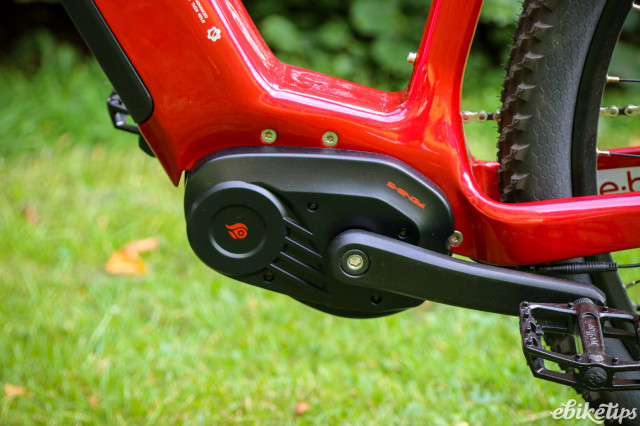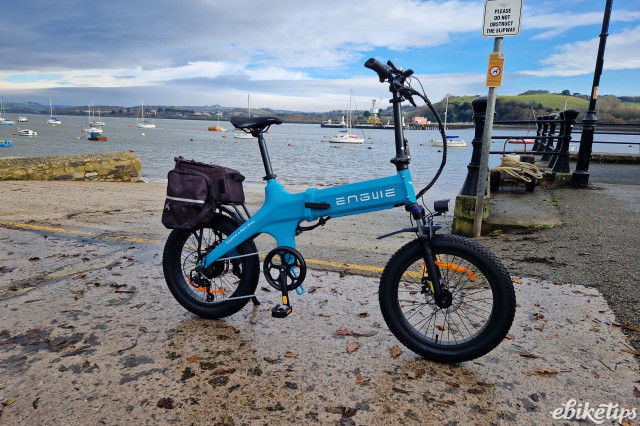If you’re looking to buy your first e-bike, you may well have noticed that some bikes have hub motors and some have mid-motors. What’s the difference? And does it matter?
On a very basic level, a hub motor is positioned on the front or rear wheel – usually the rear – whereas a mid-motor is positioned between the pedals at the bike’s bottom bracket.
If that were the full extent of the differences, this would be a very short article. As you have no doubt spotted, this is not a very short article.
Hub and mid-motors differ in terms of performance, size, handling, maintenance and – inevitably – price.
Power
UK legislation dictates that to qualify as an Electrically Assisted Pedal Cycle (EAPC), your e-bike must have a motor with a continuous rated power of no more than 250W. (If a bike is above that, it’s most likely considered a speed pedelec, which means it’ll need to be taxed and insured.)
The upshot of this is that the vast majority of e-bike motors are rated as being 250W. However, this labelling actually masks significant variation in performance.
For one thing, many motors will have a peak power output above that 250W ceiling – but of more significance in terms of this article is how the two different types of motors perform at different cycling speeds.
Motors generally work most efficiently when they spin at a particular speed and this has greater ramifications for one located at your hub.
When your wheels are spinning more slowly – such as when you’re riding up a steep hill – a hub motor won't be spinning at its optimum speed.
Mid-motors, in contrast, can maintain their efficiency on steeper gradients because they are situated at the pedals. That position means that just like you, the rider, they can exploit your bike’s gears.
When you drop down a gear to pedal at a natural cadence, a mid-motor will be working at a more efficient rpm as well. That means that compared to a hub motor, more power will be converted into forward motion and less into heat.
This is also why mid-motors are commonly used on e-cargo bikes. They provide power more quickly from a low speed or standing start - which is exactly what you need when you’re trying to get heavy loads moving.
It’s also worth pointing out that geared hub motors are also common. These perform better at slow speeds than direct drive hub motors, but they will still only work at their best within a narrower speed range compared to a mid-motor.
Battery usage and range
Hub motors can however outperform mid-motors in some respects. A key attribute is that at or near its optimum speed, a hub motor will typically prove more efficient than a more complex mid-motor.
If you're riding an e-bike somewhere relatively flat, or where the hills are gentler, you'll find that you spend the vast majority of your time moving at much the same speed - most likely somewhere near your bike motor's 25km/h (15.5mph) assistance limit. In this scenario, a hub motor is almost certainly a better option.
Not only will it prove more efficient and thus offer greater range from a fully charged battery, a hub motor setup is also typically much lighter, compounding the effect.
If however you are riding somewhere hillier and spending significant time riding uphill, you may well find you get more mileage out of a mid-drive motor, as well as better performance on the steep stuff. There's a reason why most electric mountain bikes feature mid-motors.
All other things being equal, more efficiency equals more range from the same capacity battery - but the point here is that efficiency is not fixed. It will vary according to the demands placed on the motor. Take a look at this article for a bit more info on what affects e-bike range.
Handling
Having additional weight in one of the wheels – as you do with a hub motor – can make a bike a little harder to balance. Front hub motors, in particular, can have a noticeable impact on steering and your front wheel may also struggle for grip on steeper slopes.
The central positioning of a mid-motor is obviously more balanced and also lowers the overall centre of gravity, improving stability. The flipside is that mid-motor bikes do tend to be heavier, which can be a challenge in itself for some riders.
There are also differences in how the motor kicks in. Mid-motors tend to be sold with torque sensors that measure how hard you’re pedalling. These should result in smoother operation than the cadence sensors often used with cheaper hub motors, which only measure how quickly you’re pedalling. Many hub motors are however teamed with torque sensors as well nowadays.
Size
As has been mentioned a couple of times already, hub motors are generally smaller and lighter, with geared hub motors smallest of all. This quality makes them ideal for road and folding bikes, where weight is a major concern. With the latter, they usually allow for a more compact folded ‘package’ as well.
Take a look at our guide to the best folding e-bikes for more on this.
Maintenance
Direct drive hub motors are the best option when it comes to durability. There are so few moving parts that there is really very little that can go wrong with them. As they drive the wheel, they also do not wear the rest of your drivetrain (your chain etc).
Set against that, a hub motor can make life a little more awkward in other areas.
The most obvious example is that a bike’s wheels can be taken off without any impact on a mid-motor, whereas with a hub motor, the motor is actually on the wheel itself. This means that even something as mundane as a flat tyre can turn into a bit of a headache, depending on the design.
Mid-motors can also be combined with hub gears, which tend to require less maintenance than a conventional derailleur system.
Price
Mid-motors are more complex, which makes them more expensive. They also replace the bottom bracket on the bike, so you need a specific frame design to accommodate one. That adds to the cost too.
Hub motors are simpler and can be used with stock frames, which is why you'll find them on a lot of more affordable e-bikes.
Further reading
Clearly, there are advantages and disadvantages to both hub and mid-motor systems. Our guide to the best electric bike motors factors that in with the aim of steering you towards the right kind of system for how you plan on using your e-bike.
Finally, here’s a lovely video in which Dave explains the ins and outs of hub and mid-motors in a nice calm voice while ambient music plays in the background.









